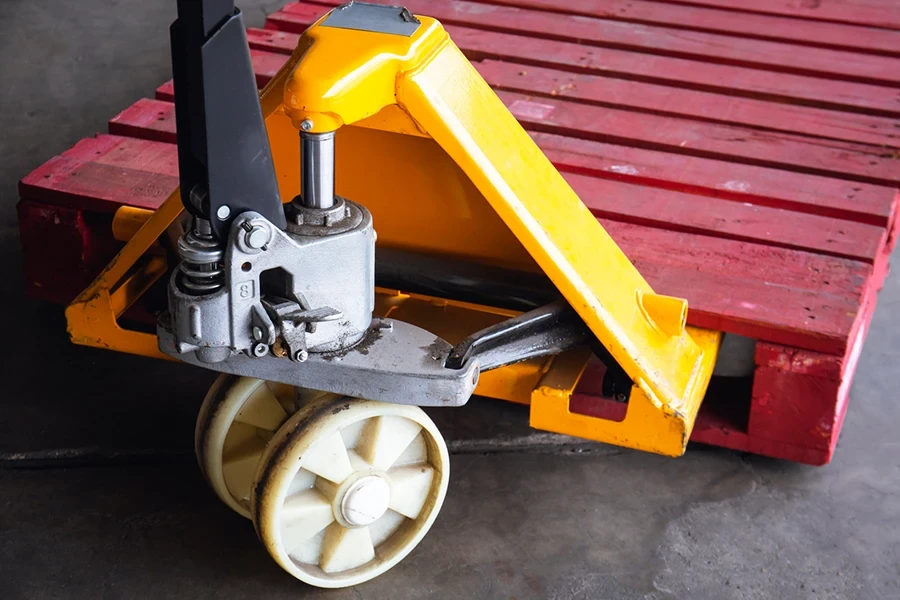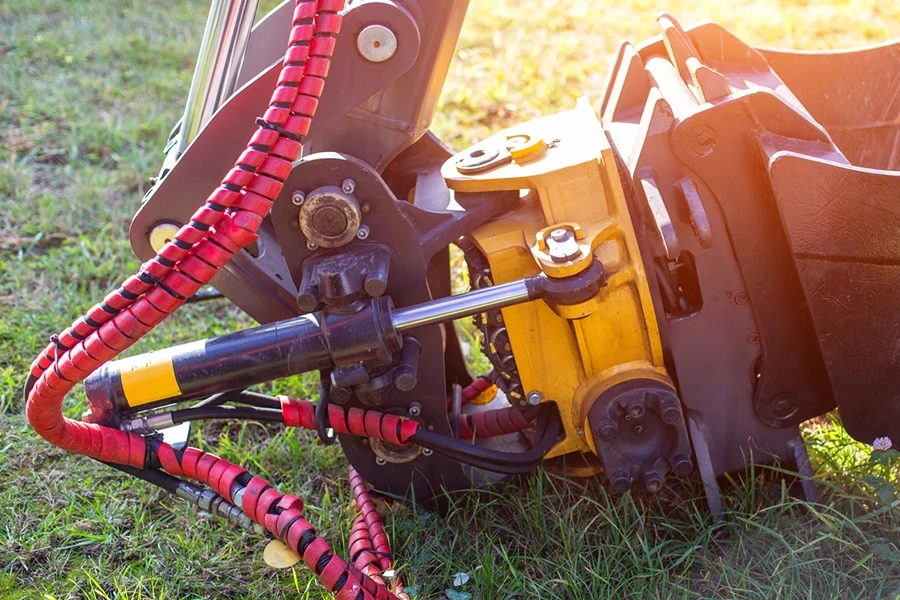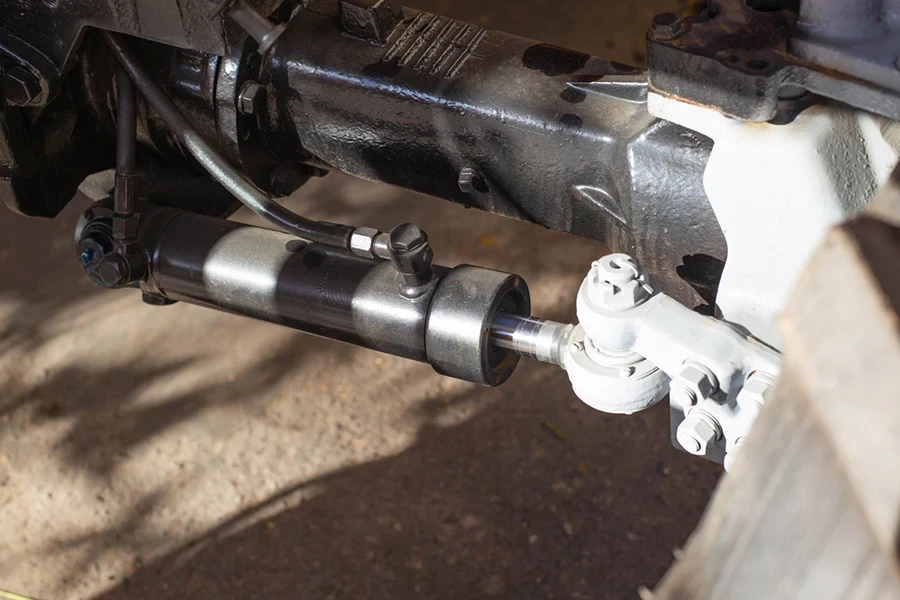Hydraulic rams – devices that store energy in flowing fluids – are simple and ingenious machines, able to pump water without any source of external energy, This blog explains how hydraulic rams work, what they are used for, how much they cost, and who makes the best ones.
Table of Contents:
– What is a hydraulic ram?
– How do hydraulic rams work?
– How to use a hydraulic ram
– How much does a hydraulic ram cost?
– Top hydraulic ram models
What is a hydraulic ram?

A hydraulic ram (also called a hydram) is a simple cyclic or reciprocating water pump driven by hydropower. It converts the kinetic energy of a large volume of water moving through a pipe into the potential energy of a smaller volume of water lifted to a greater height. The device is particularly suitable where alternative power supplies are not available or impractical.
Hydraulic rams require only four basic components: the drive pipe, which delivers water into the ram; the waste valve, whose purpose is to regulate the flow of the water; the delivery pipe, which takes water out of the ram; and the check valve, which is there to make sure that the flow of the water takes place only in one direction. In spite of their comparative simplicity, hydraulic rams are capable of lifting water far up into the air: the height of the lift easily surpasses the height of fall.
The main advantage of hydraulic rams is that they are self-balanced. It takes some skill to set them up, but once done the machine needs only minimal maintenance as it works on its own, constantly pushing back and forth. For water pumping, this makes it an extremely efficient, low-cost and eco-friendly technology. The only investment required is for the labour to set it up. One ram can power a complete rural water supply system and can be used for irrigation and livestock watering.
How do hydraulic rams work?

A hydraulic ram works based on fluid dynamics and the water hammer effect. At first, the water flows from a source, through the drive pipe and out of the waste valve. This gives the water a velocity head as it is moving. When this velocity head is released by the wate waste valve closing and the pressure spike occurs, it’s called the water hammer effect where the pressure pushes water back through the check valve, into the delivery pipe.
This cycle continues indefinitely, the outgoing waste valve opening again and again to let water flow and momentum build back up. The hydraulic ram is a self-contained system, moving automatically, powered only by the energy of the flowing water. The efficiency of a hydraulic ram depends on the water source’s height above the ram (called the head), the length and diameter of the drive pipe, and the height to which water must be pumped.
It works because of but is, nevertheless, very forgiving on the system, with modern rams using air chambers to cushion the impact of the pressure spikes and increase the life of the pump. The whole setup is a gentle, renewable energy driver – hydraulic rams are a very green pump.
How to use a hydraulic ram

Using a hydraulic ram involves several steps, beginning with the selection of the site and its installation. The site needs to have a sufficient head of water, in other words enough elevation to make it possible for a water source to be higher and hydraulic ram (the consumer of water) to be lower. The higher head the more efficient the pump will be.
Installation begins by placing the delivery pipe in the source of water and ensuring that there is a stable flow through it. In most cases, the pipe is well connected to the hydraulic ram which, in turn, should be well connected to a firm base to absorb the cyclic forces that are generated throughout the operation. From the ram, the delivery pipe is installed and leads towards the storage tank or the point of usage.
Once installed, priming is needed to put air out of the system so that water can flow through. This involves opening the waste valve for a few minutes as you manually operate the pump. Once primed, the procurement of water should become an automatic job. The hydraulic ram should pump water continually as long as there is flow from the source.
Every few months, the hydraulic ram needs to be checked to ensure that there are no blockages in the supply pipes, that the waste valve and check valves are all working correctly, and that there are no cracks or other signs of wear and tear.
The hydraulic ram will keep working properly for years, provided it is well maintained and serviced regularly.
How much does a hydraulic ram cost?

The price of a hydraulic ram also varies widely depending on size, capacity and manufacturer. Small-scale models that might serve a household or small farm generally range in price from $300 to $1,000. They will lift water to moderate heights at lower flow rates.
For bigger endeavours, such as community water supply systems or large-scale irrigation, hydraulic rams can cost anywhere from $1,000 to $5,000. And these industrial-grade models, designed to be used with higher flow rates and lift water higher than a smaller version, certainly command a price to match.
One must also factor in installation and maintenance. Installation costs depend on the complexity of the setup and, if additional components need to be included such as pipes and fittings, these can also add to the costs. But because hydraulic rams have very low operating costs and are durable, the initial investment often pays back in a couple of years.
Top hydraulic ram models

The manner in which you choose the perfect hydraulic ram is dependent on your preference and application: 1. Kato KH-67C Hydraulic Pump (21ft head) 2. Kato KH-450 Hydraulic Pump (23 ft head) 3. Kato KH-375 Hydraulic Pump (33 ft head) 4. Kato KH-350 Hydraulic Pump (34 ft 4 in head) 5. Hydraulic Ram Pump (16ft head) 6. Century Hydraulic Ram Pump 7. Gizmo Hydraulic Ram Pump 8. T P G Hydraulic Ram Pump 9. Bhaskara Hydraulic Ram Pump 10. KH Pump Hydraulic Ram 11. Loudon Hydraulic Ram Pump 12.
1. R Pumps Model RP-1: Tough, durable, reliable, featuring a robust design and capable of lifting water to heights of 50 feet and more, RP-1 is one of the most easily deployable and efficient ram pump for small to medium scale applications. It is the first choice for irrigation of small beans and pulses or any other crops in remote areas as well as for supplying water to small villages in rural areas.
2. Land to House Model LH-RP-2: This model is the easiest to install and maintain. It can be used for moderate flow rates and can lift water up to 100 ft. It’s built to last in even the harshest conditions.
3. Zylem Water Solutions Model ZW-R3: For high-flow rates and significant lift, this system is built for the rigours of large-scale applications. Large-scale water systems can reliably and efficiently utilise the ZW-R3 for community or industrial applications.
Conclusion
Hydraulic rams are a sign of human ingenuity. Transforming nature’s energy into useful work, they have become a popular solution for lifting water for many purposes, mainly in agricultural and natural settings. Not a miracle tool, the hydraulic ram has proven to be an effective and economical solution for many small and large installations around the world. By familiarising themselves with the hydraulic ram’s mechanical workings, its relative advantages and disadvantages, and its costs, potential users can make an informed decision about whether to purchase a model that suits their needs.




